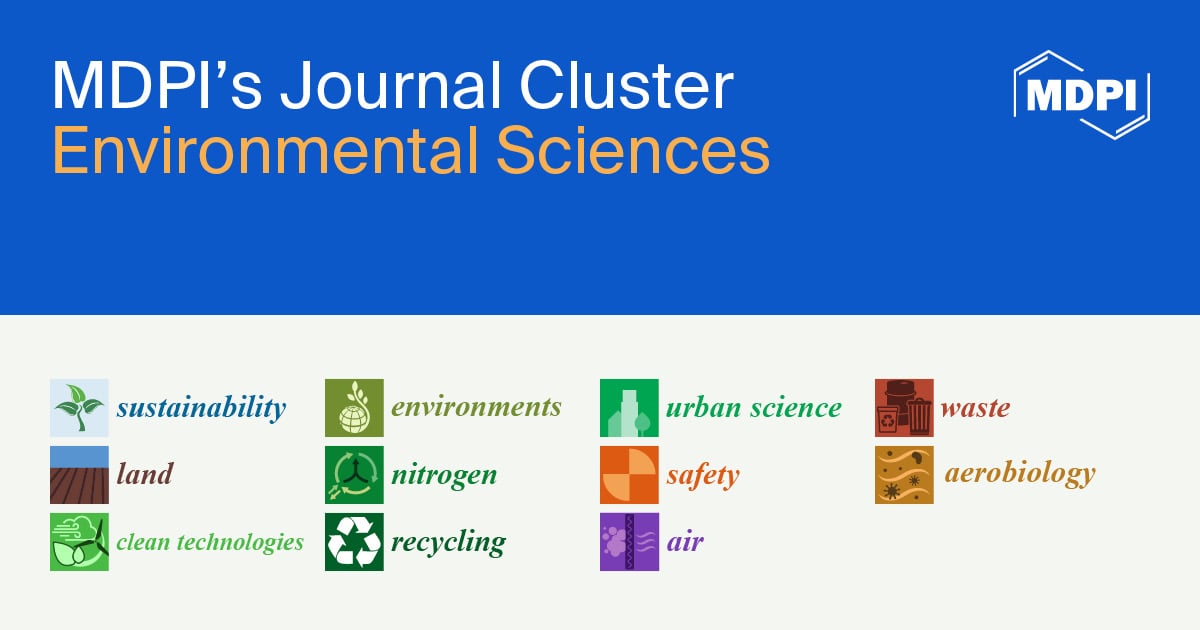Journal Description
Sustainability
Sustainability
is an international, peer-reviewed, open-access journal on environmental, cultural, economic, and social sustainability of human beings, published semimonthly online by MDPI. The Canadian Urban Transit Research & Innovation Consortium (CUTRIC), International Council for Research and Innovation in Building and Construction (CIB) and Urban Land Institute (ULI) are affiliated with Sustainability and their members receive discounts on the article processing charges.
- Open Access— free for readers, with article processing charges (APC) paid by authors or their institutions.
- High Visibility: indexed within Scopus, SCIE and SSCI (Web of Science), GEOBASE, GeoRef, Inspec, RePEc, CAPlus / SciFinder, and other databases.
- Journal Rank: JCR - Q2 (Environmental Studies) / CiteScore - Q1 (Geography, Planning and Development)
- Rapid Publication: manuscripts are peer-reviewed and a first decision is provided to authors approximately 19.3 days after submission; acceptance to publication is undertaken in 3.4 days (median values for papers published in this journal in the first half of 2025).
- Recognition of Reviewers: reviewers who provide timely, thorough peer-review reports receive vouchers entitling them to a discount on the APC of their next publication in any MDPI journal, in appreciation of the work done.
- Testimonials: See what our editors and authors say about Sustainability.
- Companion journals for Sustainability include: World, Sustainable Chemistry, Conservation, Future Transportation, Architecture, Standards, Merits, Bioresources and Bioproducts, Accounting and Auditing and Environmental Remediation.
Impact Factor:
3.3 (2024);
5-Year Impact Factor:
3.6 (2024)
Latest Articles
An Integrated IoT- and Machine Learning-Based Smart Management and Decision Support System for Sustainable Oil Palm Production
Sustainability 2025, 17(24), 11204; https://doi.org/10.3390/su172411204 (registering DOI) - 14 Dec 2025
Abstract
Oil palm is an important economic crop that is widely cultivated, especially in Southeast Asia. Thailand is one of the world’s largest producers and exporters of palm oil. Efficient management of oil palm plantations is crucial for increasing yields and minimizing agricultural losses.
[...] Read more.
Oil palm is an important economic crop that is widely cultivated, especially in Southeast Asia. Thailand is one of the world’s largest producers and exporters of palm oil. Efficient management of oil palm plantations is crucial for increasing yields and minimizing agricultural losses. This study aimed to develop a smart oil palm plantation and production management system. This system utilizes Internet of Things (IoT) technology and an integrated supervised machine learning model utilizing regression analysis to monitor and control agricultural equipment within the plantation. MySQL database was used for management of sensor data. Python (version 3.9.6) programming and Google Map API were used for data analysis, spatial analysis and data visualization suite in the system. The results showed that the data from the sensors are displayed in real-time, allowing plantation managers to monitor conditions remotely and make informed adjustments as needed. The system also includes data analysis and data visualization tools for decision-making regarding production management. The model attained an accuracy of over 95%, which reflects its reliability in performing the specified prediction task. The system serves as a support tool for automating soil quality monitoring, fertilization, and field maintenance in oil palm plantations. This enhances productivity, reduces operational costs, and improves yield planning.
Full article
(This article belongs to the Special Issue Smart Sensors and IoT Solutions for Sustainable Agriculture and Aquaculture Practices)
►
Show Figures
Open AccessArticle
A Web-Based Learning Model for Smart Campuses: A Case in Landscape Architecture Education
by
Gamze Altun and Murat Zencirkıran
Sustainability 2025, 17(24), 11203; https://doi.org/10.3390/su172411203 (registering DOI) - 14 Dec 2025
Abstract
This study presents the development and evaluation of a Quick Response (QR) code-integrated, web-based, and GIS-supported interactive learning model designed to enhance field-based plant learning in landscape architecture education. Conducted on the Görükle Campus of Bursa Uludağ University (BUU), the research systematically inventoried
[...] Read more.
This study presents the development and evaluation of a Quick Response (QR) code-integrated, web-based, and GIS-supported interactive learning model designed to enhance field-based plant learning in landscape architecture education. Conducted on the Görükle Campus of Bursa Uludağ University (BUU), the research systematically inventoried 6869 individual woody plants belonging to 172 taxa, georeferenced them using GPS, and visualized the data on an interactive campus map. Unique QR codes were generated for each taxon, providing instant access to plant profiles via a web platform and the Landscape Plants mobile application. The pedagogical effectiveness of the system was evaluated through a survey administered to 158 students, yielding a high internal reliability (Cronbach’s Alpha = 0.969). The findings indicated a high level of student satisfaction and a strong positive correlation between web-based and QR code applications (r = 0.941, p ≤ 0.001). This research represents the most comprehensive campus-scale digital plant learning system in Turkey, in terms of both species diversity and individual count. It provides a scalable and sustainable smart campus model which is applicable to nature-based disciplines worldwide.
Full article
(This article belongs to the Special Issue Sustainability-Oriented Digital Transformation and Innovative Assessments in Higher Education)
►▼
Show Figures

Figure 1
Open AccessSystematic Review
A Systematic Review on the Intersection of the Cold Chain and Digital Transformation
by
Nadin Alherimi and Mohamed Ben-Daya
Sustainability 2025, 17(24), 11202; https://doi.org/10.3390/su172411202 (registering DOI) - 14 Dec 2025
Abstract
Digital transformation (DT) is reshaping cold chain operations through technologies such as the Internet of Things (IoT), artificial intelligence (AI), blockchain, and digital twins. However, evidence remains fragmented, and a systematic synthesis focused on how these technologies affect cold chain performance, sustainability, and
[...] Read more.
Digital transformation (DT) is reshaping cold chain operations through technologies such as the Internet of Things (IoT), artificial intelligence (AI), blockchain, and digital twins. However, evidence remains fragmented, and a systematic synthesis focused on how these technologies affect cold chain performance, sustainability, and cost-efficiency is limited. This PRISMA-based systematic literature review analyzes 107 studies published between 2009 and 2025 to examine enabling technologies and application areas, operational and sustainability impacts, and the main adoption challenges. The reviewed evidence suggests that digitalization can improve real-time visibility, temperature control, traceability, and energy management, supporting waste reduction and improved quality assurance. Key challenges include high implementation costs and uncertain returns on investment, interoperability constraints, data governance and cybersecurity concerns, and organizational readiness gaps. The paper concludes with implications for managers and policymakers and a future research agenda emphasizing integrated multi-technology solutions, standardized sustainability assessment, and rigorous validation through pilots, testbeds, and real-world deployments to enable scalable and resilient cold chain digitalization.
Full article
(This article belongs to the Special Issue Sustainable Lean Development of Supply Chain and Logistic in Smart Port)
►▼
Show Figures
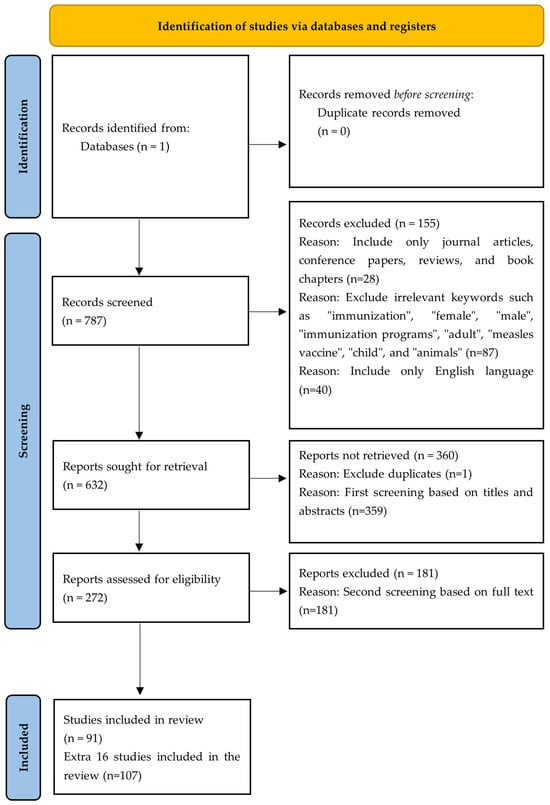
Figure 1
Open AccessArticle
Does Xenophobia Among Local Residents Affect Sustainable Tourism Development in China? A Study Based on Attribution Theory and Social Identity Theory
by
Peng Gao and Zong-Yi Zhu
Sustainability 2025, 17(24), 11201; https://doi.org/10.3390/su172411201 (registering DOI) - 14 Dec 2025
Abstract
Research on xenophobia in inbound tourism is relatively scarce, and the literature focusing on the support of local residents’ xenophobia for inbound tourism is even more limited. Using attribution theory as the guiding framework and incorporating social identity theory, this study systematically explored
[...] Read more.
Research on xenophobia in inbound tourism is relatively scarce, and the literature focusing on the support of local residents’ xenophobia for inbound tourism is even more limited. Using attribution theory as the guiding framework and incorporating social identity theory, this study systematically explored Chinese residents’ attitudes towards inbound tourism and focused on three types of social identities––cultural, environmental, and place identities, as well as xenophobia of local residents. Residents in Yangzhou, China were surveyed, yielding 401 valid questionnaires for analysis. The results showed that cultural and place identities significantly negatively affected residents’ xenophobia, while environmental identity had no significant effect on residents’ xenophobia. In addition, residents’ xenophobia significantly negatively affected their community participation as well as their endorsement of inbound tourism. Secondly, residents’ cultural and place identities indirectly influence their endorsement of inbound tourism through xenophobia. Finally, social distance played a significant moderating role in certain pathways, specifically in moderating the relationship between cultural identity and xenophobia, and between xenophobia and endorsement of inbound tourism. This study extends the research on the factors affecting inbound tourism, which is significant for promoting the sustainable development of inbound tourism.
Full article
(This article belongs to the Special Issue Moving beyond Sustainable Tourism Rediscovery through Regenerative Travel)
►▼
Show Figures
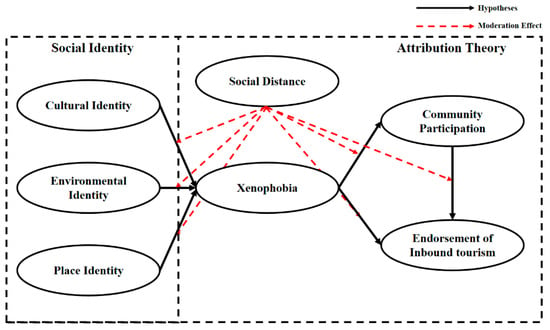
Figure 1
Open AccessArticle
AI Transparency and Sustainable Travel Under Climate Risk: A Geographical Perspective on Trust, Spatial Decision-Making, and Rural Destination Resilience
by
Aleksandra Vujko, Darjan Karabašević, Aleksa Panić, Martina Arsić and Vuk Mirčetić
Sustainability 2025, 17(24), 11200; https://doi.org/10.3390/su172411200 (registering DOI) - 14 Dec 2025
Abstract
Tourism is a key spatial process linking human mobility, resource consumption, and environmental change. Despite growing awareness of climate risks, sustainable travel behavior often remains inconsistent with pro-environmental attitudes, reflecting the persistent attitude–behavior gap. This study examines how psychological factors—sustainability motives, ecological identity,
[...] Read more.
Tourism is a key spatial process linking human mobility, resource consumption, and environmental change. Despite growing awareness of climate risks, sustainable travel behavior often remains inconsistent with pro-environmental attitudes, reflecting the persistent attitude–behavior gap. This study examines how psychological factors—sustainability motives, ecological identity, and climate attitudes—interact with artificial intelligence (AI) transparency to shape travel decisions with spatial and environmental consequences. Using survey data from 1795 leisure travelers and a discrete-choice experiment simulating hotel booking scenarios, the study shows that ecological identity and climate attitudes reinforce sustainability motives and intentions, while transparent AI recommendations enhance perceived clarity, data visibility, and reliability. These transparency effects amplify the influence of eco-scores on revealed spatial preferences, with trust mediating the relationship between transparency and sustainable choices. Conceptually, the study integrates psychological and technological perspectives within a geographical framework of human–environment interaction and extends this lens to rural destinations, where travel decisions directly affect cultural landscapes and climate-sensitive ecosystems. Practically, the findings demonstrate that transparent AI systems can guide spatial redistribution of tourist flows, mitigate destination-level climate pressures, and support equitable resource management in sustainable tourism planning. These mechanisms are particularly relevant for rural areas and traditional cultural landscapes facing heightened vulnerability to climate stress, depopulation, and uneven visitation patterns. Transparent and trustworthy AI can thus convert environmental awareness into spatially sustainable behavior, contributing to more resilient and balanced tourism geographies.
Full article
(This article belongs to the Special Issue Sustainable Tourism and the Cultural Landscape in Rural Areas)
►▼
Show Figures
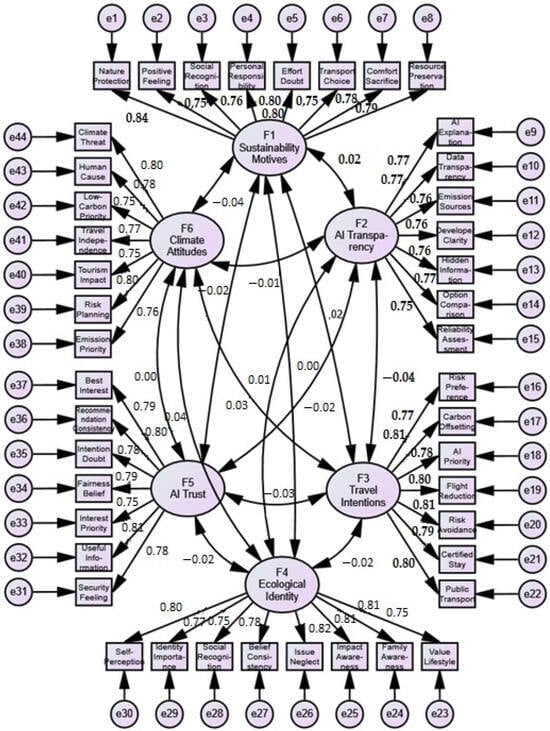
Figure 1
Open AccessArticle
Sustainable Road Safety: Predicting Traffic Accident Severity in Portugal Using Machine Learning
by
José Cunha, José Silvestre Silva, Ricardo Ribeiro and Paulo Gomes
Sustainability 2025, 17(24), 11199; https://doi.org/10.3390/su172411199 (registering DOI) - 14 Dec 2025
Abstract
►▼
Show Figures
Road traffic accidents remain a major global challenge, contributing to significant human and economic losses each year. In Portugal, the analysis and prevention of severe accidents are critical for optimizing the allocation of law enforcement resources and improving emergency response strategies. This study
[...] Read more.
Road traffic accidents remain a major global challenge, contributing to significant human and economic losses each year. In Portugal, the analysis and prevention of severe accidents are critical for optimizing the allocation of law enforcement resources and improving emergency response strategies. This study aims to develop and evaluate predictive models for accident severity using real-world data collected by the Portuguese Guarda Nacional Republicana (GNR) between 2019 and 2023. Four algorithms, Random Forest, XGBoost, Multilayer Perceptron (MLP), and Deep Neural Networks (DNN), were implemented to capture both linear and non-linear relationships within the dataset. To address the natural class imbalance, class weighting, Synthetic Minority Oversampling Technique (SMOTE), and Random Undersampling were applied. The models were assessed using Recall, F1-score, and G-Mean, with particular emphasis on detecting severe accidents. Results showed that DNNs achieved the best balance between sensitivity and overall performance, especially under SMOTE and class weighting conditions. The findings highlight the potential of classical machine learning and deep learning models to support proactive road safety management and inform resource allocation decisions in high-risk scenarios.This research contributes to sustainability by enabling data-driven road safety management, which reduces human and economic losses associated with traffic accidents and supports more efficient allocation of public resources. By improving the prediction of severe accidents, the study reinforces sustainable development goals related to safe mobility, resilient infrastructure, and effective disaster prevention and response policies.
Full article
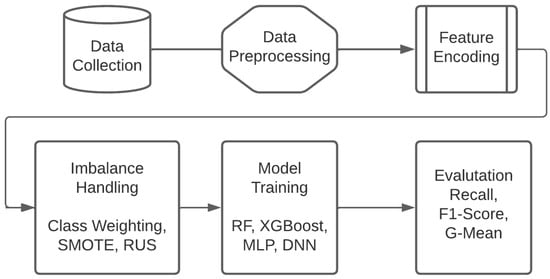
Figure 1
Open AccessArticle
The Effects of COVID-19-Period Sustainability Practices: Gains for the Good, No Punishment for the Unethical
by
Sırma Şeker and Cumhur Ekinci
Sustainability 2025, 17(24), 11198; https://doi.org/10.3390/su172411198 (registering DOI) - 14 Dec 2025
Abstract
This paper explores the impact of sustainability practices (ESG and greenwashing) on profitability, with a special focus on crises, in particular COVID-19. We analyze the post-crisis profitability of sustainable firms, distinguishing between country groups (developed/developing and high voice and accountability/low voice and accountability).
[...] Read more.
This paper explores the impact of sustainability practices (ESG and greenwashing) on profitability, with a special focus on crises, in particular COVID-19. We analyze the post-crisis profitability of sustainable firms, distinguishing between country groups (developed/developing and high voice and accountability/low voice and accountability). We run fixed effects difference-in-differences regressions on a dataset comprising 3832 to 14,652 firm-year observations from 47 stock exchanges. Evidence suggests that firms with a higher ESG during COVID-19 achieved higher profitability afterwards. Environmental score (E) contributed the most to profitability. Although greenwashing improved post-crisis operational performance, its effect on market value is mixed. Countries exhibited different dynamics regarding the sustainability–profitability nexus: firms in developed countries and countries with greater voice and accountability achieved higher post-crisis profitability. In the post-crisis recovery period, this pattern reversed (for ESG) or disappeared (for greenwashing). Overall, companies investing in ESG (E, S, G) during COVID-19 gained substantial benefits, but those engaging in greenwashing were not penalized much, especially those in developed countries and countries with greater voice and accountability. These findings show how institutional and stakeholder-driven pressures can play a critical role in the sustainability–profitability relationship, engendering important implications for managers and policymakers.
Full article
(This article belongs to the Section Economic and Business Aspects of Sustainability)
►▼
Show Figures
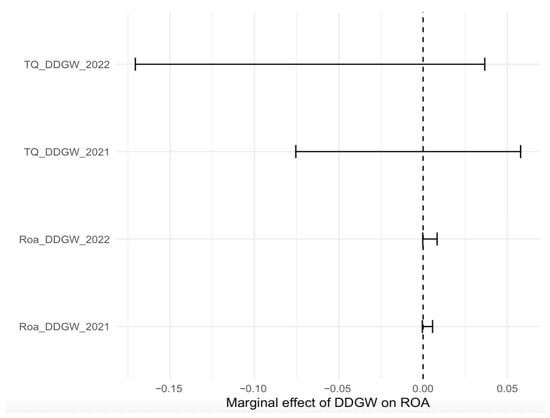
Figure 1
Open AccessArticle
The ESG–Financial Performance Nexus in Startups: A Multi-Level Contingency Framework in the Emerging Economy
by
Miao Deng, Qiuyue Shao and Shouming Chen
Sustainability 2025, 17(24), 11197; https://doi.org/10.3390/su172411197 (registering DOI) - 14 Dec 2025
Abstract
This study investigates the relationship between Environmental, Social, and Governance (ESG) performance and the financial performance of startups in emerging economies. We posit that strong ESG practices serve as a critical signal of quality and legitimacy, helping to alleviate the liability of newness
[...] Read more.
This study investigates the relationship between Environmental, Social, and Governance (ESG) performance and the financial performance of startups in emerging economies. We posit that strong ESG practices serve as a critical signal of quality and legitimacy, helping to alleviate the liability of newness by mitigating information asymmetries for external stakeholders. Analyzing a longitudinal dataset of startups, we find a positive main effect of ESG on financial performance. Further, we demonstrate that this relationship is contingent on factors at multiple levels. The positive effect of ESG is weakened in contexts of high firm digitalization, greater analyst coverage, and developed regional institutions, as these factors act as substitutes by providing alternative sources of credible information, thereby reducing the unique signaling value of ESG. Conversely, intense industry competition amplifies the ESG advantage, as the signal becomes more critical for differentiation. Our findings contribute by shifting the ESG discourse to the entrepreneurial context and offering a nuanced, multi-level understanding of when a firm’s sustainable investment is most pivotal as a strategic asset for startups navigating institutional voids.
Full article
Open AccessArticle
Managing Strategic Interactions for a Circular Economy: An Evolutionary Game Analysis of a Dynamic Deposit-Refund System in Electric Vehicle Battery Recycling
by
Honghu Gao, Xu Han, Linjie Sun and Guangmei Cao
Sustainability 2025, 17(24), 11196; https://doi.org/10.3390/su172411196 (registering DOI) - 14 Dec 2025
Abstract
This study addresses the challenge of electric vehicle power battery recycling by proposing a dynamic deposit-refund system (DRS) under the Extended Producer Responsibility (EPR) framework, as an alternative to the conventional static DRS. An evolutionary game model is developed to capture the strategic
[...] Read more.
This study addresses the challenge of electric vehicle power battery recycling by proposing a dynamic deposit-refund system (DRS) under the Extended Producer Responsibility (EPR) framework, as an alternative to the conventional static DRS. An evolutionary game model is developed to capture the strategic interactions between local governments and responsible enterprises, incorporating a feedback mechanism where the deposit level is dynamically adjusted based on corporate EPR fulfillment rates. Using system dynamics simulation, the evolutionary paths under both static and dynamic DRS regimes are compared. The results demonstrate that the dynamic DRS effectively eliminates persistent oscillations and guides the system toward a stable equilibrium. Furthermore, by defining an ideal scenario, key factors are identified and prioritized to assist the government in steering the system toward this desired state. These findings offer actionable insights for designing adaptive regulatory mechanisms and fostering a self-sustaining battery recycling ecosystem.
Full article
(This article belongs to the Special Issue Sustainable Energy: Circular Economy and Supply Chain Management)
►▼
Show Figures

Figure 1
Open AccessArticle
End-to-End Modelling as a Non-Invasive Tool for Sustainable Risk Management After the Rupture of the Landslide Dam Along River Courses
by
Massimo Mangifesta, Claudia Zito, Mirko Francioni, Luigi Guerriero, Diego Di Martire, Domenico Calcaterra, Corrado Cencetti, Antonio Pasculli, Francisco J. Mendez and Nicola Sciarra
Sustainability 2025, 17(24), 11195; https://doi.org/10.3390/su172411195 (registering DOI) - 14 Dec 2025
Abstract
Debris flows represent a significant geohydrological hazard, impacting the surrounding environment and threatening human settlements by altering ecological equilibria. The formation of temporary, often unstable, natural dams that obstruct normal river flow and create secondary flood risks poses a complex and prolonged threat
[...] Read more.
Debris flows represent a significant geohydrological hazard, impacting the surrounding environment and threatening human settlements by altering ecological equilibria. The formation of temporary, often unstable, natural dams that obstruct normal river flow and create secondary flood risks poses a complex and prolonged threat to the sustainable management of water resources. Non-invasive risk assessment and analysis tools are therefore essential for addressing this challenge effectively. In this context, this study uses an end-to-end numerical modelling approach validated on an actual river obstructed in past by a debris flow. The simulation focused on sustainable risk management after the landslide dam rupture. This computational methodology is a non-invasive technology that provides a fundamental alternative to costly and environmentally invasive field techniques for assessing the risk of complex river systems. Two separate numerical simulations were carried out using the HEC-RAS code. The first simulation used the integrated sediment transport module to quantify the dynamics of solid material deposition and dilution. The second simulation modelled secondary flooding scenarios using the dam break simulation module. The aim of integrating these non-invasive simulations is to analyse the interaction between the river and debris accumulation, understand the river’s natural regeneration capacity and determine the hydraulic response to sudden dam failure. These results are essential for geohydrological risk assessment and mitigation, thereby improving the effectiveness of prevention measures and systemic resilience against landslides.
Full article
(This article belongs to the Special Issue Green and Non-Invasive Technology for Sustainable Development of Groundwater and Geohydrology)
Open AccessArticle
Renewable Energy Sources in Healthcare as a Factor in Sustainable Development in EU Countries
by
Viktoriia Vovk, Agnieszka Kister, Faran Latif and Silvia Ștefania Maican
Sustainability 2025, 17(24), 11194; https://doi.org/10.3390/su172411194 (registering DOI) - 14 Dec 2025
Abstract
European Union (EU) countries are struggling with the high costs of operating healthcare facilities due to energy consumption. The rational use of resources, including renewable energy sources (RESs), is a goal of sustainable development in terms of solving environmental problems. There are few
[...] Read more.
European Union (EU) countries are struggling with the high costs of operating healthcare facilities due to energy consumption. The rational use of resources, including renewable energy sources (RESs), is a goal of sustainable development in terms of solving environmental problems. There are few literature studies that analyze the impact of the use of RESs in the healthcare sector on the achievement of sustainable development goals in EU countries. This study examines the potential of RESs to address environmental challenges in EU healthcare systems and their impact on the Healthcare Index (HI). A quantitative analysis explores the relationship between the Environmental Performance Index (EPI), Environmental Health Score (EHS) and HI. Data were taken from Yale Center for Environmental Law and Policy (YCELP), European Environment Agency (EEA), and the Numbeo. This study assessed the relationship by using SPSS 29. This study concluded that RESs should be prioritized in healthcare facilities to increase environmental performance and thus meet sustainable development goals. The use of RESs affects environmental performance and improves HI. The results indicate significant positive correlations, highlighting the benefits of RES adoption for both environmental and health indicators.
Full article
(This article belongs to the Section Energy Sustainability)
►▼
Show Figures

Figure 1
Open AccessArticle
Sustainable Optimization of Residential Electricity Consumption Using Predictive Modeling and Non-Intrusive Load Monitoring
by
Nashitah Alwaz, Muhammad Mehran Bashir, Attique Ur Rehman, Israr Ullah and Micheal Galea
Sustainability 2025, 17(24), 11193; https://doi.org/10.3390/su172411193 (registering DOI) - 14 Dec 2025
Abstract
To ensure reliable, efficient and sustainable operation of modern power networks, accurate load forecasting is an important task in system planning and control. It is also a crucial task for the efficient operation of smart grids to maintain a balance between load shifting,
[...] Read more.
To ensure reliable, efficient and sustainable operation of modern power networks, accurate load forecasting is an important task in system planning and control. It is also a crucial task for the efficient operation of smart grids to maintain a balance between load shifting, load management and power dispatch. In this regard, this research study aims to investigate the efficiency of various machine learning models for whole-house energy consumption prediction and appliance-level load disaggregation using Non-Intrusive Load Monitoring (NILM). The primary objective is to determine which model offers the most accurate forecasts for both individual appliance consumption patterns and the total amount of energy used by the household. The empirical study presents comparative performance analysis of machine learning models, i.e., Random Forest, Decision Tree, K-Nearest Neighbors (KNN), Extreme Gradient Boosting (XGBoost), Gradient Boosting and Support Vector Regressor (SVR) for load forecasting and load disaggregation. This research is conducted on PRECON: Pakistan Residential Electricity Dataset consisting of 42 Pakistani households. The dataset was recorded originally as one minute per sample, but the proposed study aggregated it to hourly samples to evaluate models’ alignment with the typical sampling rate of smart meters in Pakistan. It enables the models to more accurately depict implementation scenarios in real-world settings. The statistical measures MAE, MSE, RMSE and R2 have been employed for performance evaluation. The proposed Random Forest algorithm out-performs all other employed models, with the lowest error values (MAE: 0.1316, MSE: 0.0367, RMSE: 0.1916) and the highest R2 score of 0.9865. Furthermore, for detecting appliance events from aggregate power data, ensemble models such as Random Forest performed better than other models for ON/OFF prediction. To evaluate the suitability of machine learning models for real-time, appliance-level energy forecasting using Non-Intrusive Load Monitoring (NILM), this study presents a novel evaluation framework that combines learning speed and edge adaptability with conventional performance metrics (e.g., R2, MAE). This paper introduces a NILM-based approach for load forecasting and appliance-level ON/OFF prediction, representing its capacity to improve residential energy efficiency and encourage sustainable energy consumption, while emphasizing operational metrics for implementation in embedded smart grid systems—an area mainly neglected in prior NILM-based research articles. The results provide useful information for improving demand-side energy management, facilitating more effective load disaggregation, and maximizing the energy efficiency and responsiveness of smart grids.
Full article
(This article belongs to the Section Energy Sustainability)
►▼
Show Figures
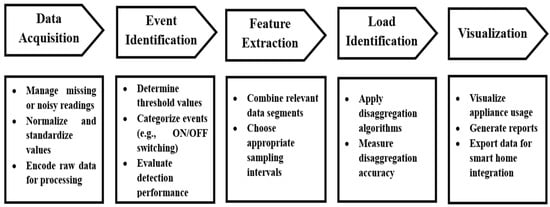
Figure 1
Open AccessArticle
Pollution Governance in the Lake Taihu Basin: Achievements and Challenges
by
Binbin Wu, Lachun Wang, Boqiang Qin and Mengyuan Zhu
Sustainability 2025, 17(24), 11192; https://doi.org/10.3390/su172411192 (registering DOI) - 14 Dec 2025
Abstract
Following the drinking water crisis induced by harmful algal blooms in Lake Taihu in 2007, industrial restructuring and systematic pollution treatment projects were synchronously conducted to control pollutions in Lake Taihu basin. This paper conducts a systematic review of integrated pollution governance in
[...] Read more.
Following the drinking water crisis induced by harmful algal blooms in Lake Taihu in 2007, industrial restructuring and systematic pollution treatment projects were synchronously conducted to control pollutions in Lake Taihu basin. This paper conducts a systematic review of integrated pollution governance in the Lake Taihu Basin to conduct an exploration of sustainability in developing areas. Critical assessment of the conceptual frameworks and implementation strategies from the aspects of governance concept, technology application and environmental benefits have been made through multi-year water quality monitoring. The results showed that the total nitrogen (TN) and total phosphorous (TP) loads entering the lake decreased by 45.6% and 36.6% in 2008–2023, and the water quality of Lake Tiahu and all 15 major inflow rivers met or exceeded Grade III standards in 2024, according to the National Standard for Surface Water Quality. The lake ecosystem has showed signs of restoration via a decline in the extent and intensity of toxic cyanobacterial bloom. At same time, the local economics have been developed without halting due to the pollution governance, which demonstrates a feasible pathway for both pollution management and economic development. This synergistic governance with both soft and hard measures implemented in Lake Taihu basin has reference significance for other developing countries toward sustainability around the world.
Full article
(This article belongs to the Section Sustainable Water Management)
►▼
Show Figures
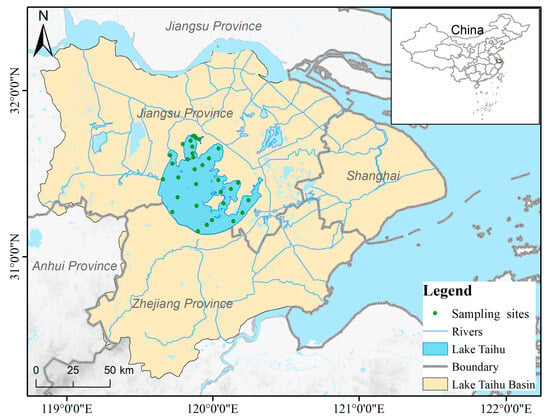
Figure 1
Open AccessArticle
Synergistic Effects of Carbon Reduction in Urban Energy Consumption and Pollution Mitigation: A Case Study of Chengdu, China
by
Qiaochu Li and Peng Zhang
Sustainability 2025, 17(24), 11191; https://doi.org/10.3390/su172411191 (registering DOI) - 14 Dec 2025
Abstract
►▼
Show Figures
Air pollutants and greenhouse gases share common sources, primarily originating from human activities such as energy utilization, thus presenting significant potential for synergistic control. Isolated consideration of solutions for either pollution mitigation or carbon reduction increases the unit cost of environmental governance and
[...] Read more.
Air pollutants and greenhouse gases share common sources, primarily originating from human activities such as energy utilization, thus presenting significant potential for synergistic control. Isolated consideration of solutions for either pollution mitigation or carbon reduction increases the unit cost of environmental governance and leads to inconsistencies and overlapping effects in policy measures. This study takes Chengdu, a low-carbon pilot city in China, as a case study. Based on clarifying the characteristics of regional air pollutant emissions and carbon emissions from energy consumption, it empirically investigates the synergistic variation in carbon emissions from diverse socioeconomic industries and multiple air pollutant emissions. The empirical results reveal the following: (1) during the research period, Chengdu’s air quality excellence rate demonstrated continuous improvement. Meanwhile, the carbon emissions from energy consumption exhibited a three-phase developmental pattern. The driving forces of growth had shifted from traditional high-energy-consuming industries to advanced manufacturing, urban basic energy demands, and energy extraction industries serving national strategies. (2) The synergistic reduction in carbon emissions with PM10 and PM2.5 reached relatively high levels from 2016 to 2019, followed by fluctuations due to the impact of the COVID-19 pandemic. The synergistic reduction between carbon emissions and SO2 exhibited considerable volatility. The electrification trend in transportation significantly promoted the synergistic reduction in carbon emissions and NO2 emissions. Due to the fact that O3 is a secondary pollutant with complex sources, achieving synergistic governance with carbon emissions proved more challenging. As a result of technological limitations, the synergistic reduction in carbon emissions and CO gradually exhibited a trend of diminishing marginal effects. The synergistic reduction effects between industry-specific carbon emissions and overall air pollutant emissions can be divided into five categories: sustained high-efficiency, generally stable, fluctuating, sudden-decline, and persistently low.
Full article
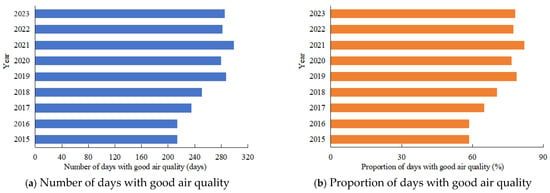
Figure 1
Open AccessArticle
The Spillover Effect of National Auditing on the ESG Performance of Supply Chains: Empirical Evidence from the Quasi-Natural Experiment of China’s NAO Auditing SOEs
by
Hui Wu, Xiaoyu Zhao, Yixuan Li and Xuming Shangguan
Sustainability 2025, 17(24), 11190; https://doi.org/10.3390/su172411190 (registering DOI) - 14 Dec 2025
Abstract
Supply chains play a crucial role in achieving the Sustainable Development Goals (SDGs) through the improvement of ESG performance. From the perspective of synergy between national auditing and corporate governance, this study integrates the SDGs into the supply chain ESG strategy and evaluates
[...] Read more.
Supply chains play a crucial role in achieving the Sustainable Development Goals (SDGs) through the improvement of ESG performance. From the perspective of synergy between national auditing and corporate governance, this study integrates the SDGs into the supply chain ESG strategy and evaluates the spillover effects of national auditing on supply chain ESG performance, drawing on the quasi-natural experiment of China’s National Audit Office (NAO) auditing state-owned enterprises (SOEs). The findings illustrate that national auditing has a significant positive spillover effect on the ESG performance of supply chains. These findings remain robust after addressing potential endogeneity via placebo tests, PSM-DID, and Heckman two-step method. Heterogeneity analysis highlights that supply chains with strong cooperation stability, high concentration, and presence in the same industry have more pronounced ESG spillover effects. Mechanism analysis further demonstrates that national auditing enhances the ESG performance of supply chains by exerting imitative, mandatory, and normative pressures. Moreover, audit regulatory agencies should establish a mechanism for sharing audit results to exert mandatory institutional pressure, thereby ensuring this mechanism enables audits to fully fulfill their role in improving supply chain ESG performance.
Full article
(This article belongs to the Special Issue Advances in Industrial Engineering and Management Towards Sustainable Development Goals)
►▼
Show Figures

Figure 1
Open AccessArticle
Long-Term Trends and Characteristics of Water Temperature Extremes of a Large Lowland River During the Summer Season from 1920 to 2023—Case Study of the Bug River in Poland, Eastern Europe
by
Ewa Kaznowska, Michał Wasilewicz, Agnieszka Hejduk, Mateusz Stelmaszczyk and Leszek Hejduk
Sustainability 2025, 17(24), 11189; https://doi.org/10.3390/su172411189 (registering DOI) - 14 Dec 2025
Abstract
Sustainable water resource management must address the current challenges posed by changes in the thermal regime of water bodies. The ongoing increase in air temperature leads to higher water temperatures, resulting in various unfavorable changes in the aquatic environment and limiting its capacity
[...] Read more.
Sustainable water resource management must address the current challenges posed by changes in the thermal regime of water bodies. The ongoing increase in air temperature leads to higher water temperatures, resulting in various unfavorable changes in the aquatic environment and limiting its capacity to meet human subsistence and economic needs. The aim of this study was to evaluate the impact of climate change on the thermal regime of the Bug River, a large lowland river in Eastern Europe (Poland) that remains thermally unpolluted. Using archival sources, we collected, reconstructed, and standardized water temperature data for the Bug River at the Wyszków profile during the summer months (April to October) from 1920 to 2023, despite several gaps in the data. Our analysis revealed a significant increase in the average summer water temperature, along with maximum and minimum temperatures, although there was considerable month-to-month variability throughout the study period. The observed upward trend in water temperature corresponds to the rise in air temperature. Between the subsequent 30-year climate norms of 1971–2000, 1981–2010, and 1991–2020, we noted a steady increase of 0.4 °C in average summer water temperatures. The highest average monthly water temperatures in recent years occurred during the summer seasons of 2018, 2019, 2021, and 2023. Notably, we also recorded some of the highest water temperatures in July 1951, June 1932, and July 1947 and 2010. Furthermore, we found a significant relationship (R2 = 0.68) between maximum water temperature during low flow events and the average discharge. The results of this study indicate a warming trend in the waters of the Bug River.
Full article
(This article belongs to the Section Sustainable Water Management)
►▼
Show Figures
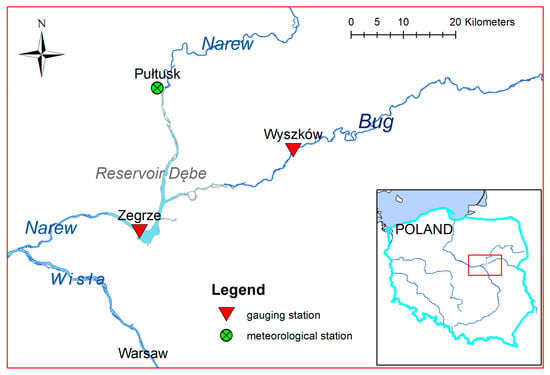
Figure 1
Open AccessEditorial
Sustainable Urban Planning Models and Effective Management Tools in Resilient Low-Carbon Cities: Issues, Methods and Innovations
by
Felicia Di Liddo, Pierluigi Morano, Francesco Tajani and Paola Amoruso
Sustainability 2025, 17(24), 11188; https://doi.org/10.3390/su172411188 (registering DOI) - 14 Dec 2025
Abstract
Decarbonization is one of the most relevant topics within the construction sector and urban planning policies, and is a major part of the environmental strategies of many European Union countries and the Sustainable Development Goals [...]
Full article
(This article belongs to the Special Issue Sustainable Urban Planning Models and Effective Management Tools in Resilient Low-Carbon Cities: Issues, Methods and Innovations)
►▼
Show Figures
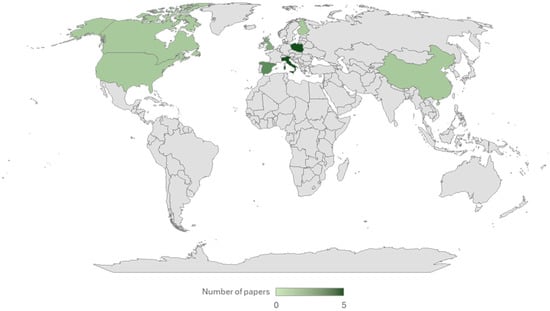
Figure 1
Open AccessReview
Sustainable Governance of Extreme Heat Risk in the Context of Occupational Safety and Health
by
Daniel Onuț Badea, Doru Costin Darabont, Lucian-Ionel Cioca, Costică Bejinariu, Andreea Feraru and Augustina Mirabela Pruteanu
Sustainability 2025, 17(24), 11187; https://doi.org/10.3390/su172411187 (registering DOI) - 14 Dec 2025
Abstract
►▼
Show Figures
Extreme heat disrupts labour, infrastructure, and health systems, yet most response frameworks intervene after clinical impact is confirmed. This review analyzes documented cases across sectors and regions to determine where heat effects are first detected and why intervention timing varies. The analysis used
[...] Read more.
Extreme heat disrupts labour, infrastructure, and health systems, yet most response frameworks intervene after clinical impact is confirmed. This review analyzes documented cases across sectors and regions to determine where heat effects are first detected and why intervention timing varies. The analysis used institutional reports, epidemiological summaries and occupational data to map how early functional signals appear across systems. A conceptual matrix is proposed to permit action to be authorized at the earliest sign of functional stress, using mortality, productivity, service instability, vulnerability, and adaptive capacity as operational inputs rather than retrospective outcomes. The analysis suggests that heat becomes observable first through reduced work capacity or infrastructure strain, not through hospital data, and that systems with predefined activation criteria engage earlier and with less irreversible loss. The matrix provides a transferable basis for integrating occupational, infrastructural, and clinical information into a unified heat response mechanism. This approach supports a transition from post-impact validation to forward-based decision logic, particularly in settings where vulnerable workers remain outside formal surveillance.
Full article
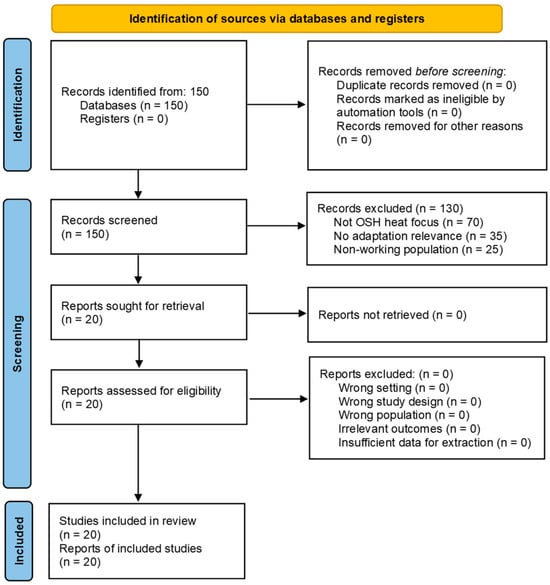
Figure 1
Open AccessSystematic Review
Transformative Change in Coastal Biodiversity Conservation: A Systematic Literature Review of Governance, Social–Ecological, and Cultural Pathways
by
Ann-Marie Nienaber and Durukan Imrie-Kuzu
Sustainability 2025, 17(24), 11186; https://doi.org/10.3390/su172411186 (registering DOI) - 13 Dec 2025
Abstract
Coastal ecosystems are among the most biodiverse and economically valuable environments on Earth, yet they face escalating threats from climate change, development, and resource exploitation. Traditional conservation approaches have proven insufficient to address the systemic drivers of biodiversity loss, calling for transformative change
[...] Read more.
Coastal ecosystems are among the most biodiverse and economically valuable environments on Earth, yet they face escalating threats from climate change, development, and resource exploitation. Traditional conservation approaches have proven insufficient to address the systemic drivers of biodiversity loss, calling for transformative change that fundamentally reconfigures social–ecological systems. This semi-structured systematic literature review synthesizes current knowledge on transformative change in coastal biodiversity conservation, guided by the Social–Ecological Systems Framework (SESF) and expanded to include behavioral transformation as a central dimension. Behavioral transformation is defined as the sustained embedding of new attitudes, norms, and practices within governance, institutional, and community settings. Through a comprehensive review of academic databases (SCOPUS, Web of Science, CAB Abstracts) and gray literature, 134 studies published between 2010 and 2024 were analyzed. The synthesis identifies four interdependent pathways of transformation: (1) governance innovation and power redistribution, (2) behavioral change and stakeholder engagement, (3) socio-ecological restructuring, and (4) normative and cultural shifts in human–nature relations. Successful initiatives integrate trust-building, social justice, and participatory decision-making, linking behavioral change with institutional redesign and adaptive management. However, critical gaps remain in understanding long-term durability, equity outcomes, and scalability across governance levels. The review proposes three research priorities: (1) embedding behavioral science in conservation design, (2) employing longitudinal and cross-scale analyses, and (3) advancing adaptive, learning-based governance to enhance socio-ecological resilience.
Full article
(This article belongs to the Special Issue Shifting Paradigms: Reimagining Human-Nature Relationships for Sustainable Biodiversity Conservation)
►▼
Show Figures
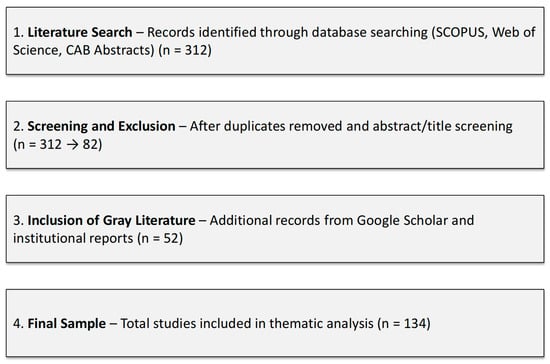
Figure 1
Open AccessArticle
Effects of Personality Type Tools and Problem-Solving Methods on Engineering Company Project Success
by
Anamarija Maric and Hrvoje Cajner
Sustainability 2025, 17(24), 11185; https://doi.org/10.3390/su172411185 (registering DOI) - 13 Dec 2025
Abstract
►▼
Show Figures
Personality type tools have been utilized to explain human behavior by organizing, classifying, and categorizing individuals into distinct personality types. Alternatively, problem-solving methods have been employed throughout project life cycles to enhance problem solving across all levels of the organizational workforce. This study
[...] Read more.
Personality type tools have been utilized to explain human behavior by organizing, classifying, and categorizing individuals into distinct personality types. Alternatively, problem-solving methods have been employed throughout project life cycles to enhance problem solving across all levels of the organizational workforce. This study evaluated the influence of personality tools and methods for problem solving on project success. The population comprised 29 active project managers employed in the engineering section of a large manufacturing firm, focusing on sustainable development projects. Quantitative study, through correlational analysis, demonstrates that personality tools facilitate the formation of effective project teams (p < 0.05) and that problem-solving methods significantly improve the likelihood of successful project completion (p < 0.05). This research presents a novel approach and a decision framework for projects that identify the preferred methods for solving problems associated with various MBTI profiles, and demonstrate that where MBTI is utilized as a guiding tool for effective project team formation, ESTJ, ENTJ, ISTJ, and INTJ are prioritized profiles. The research concludes that selecting methods for solving problems according to the nature of the problem impacts overall project success, with the Five Whys methodology contributing when used for root cause analysis. Therefore, it is essential to enhance project managers’ awareness that specific tools and methodologies can aid in the formation of teams that successfully complete projects.
Full article
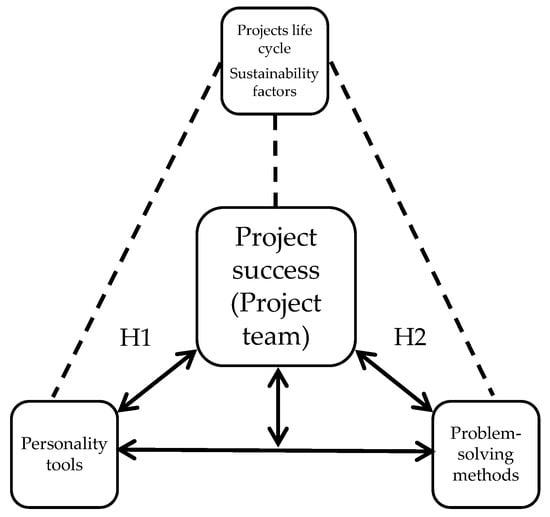
Figure 1

Journal Menu
► ▼ Journal Menu-
- Sustainability Home
- Aims & Scope
- Editorial Board
- Reviewer Board
- Topical Advisory Panel
- Instructions for Authors
- Special Issues
- Topics
- Sections & Collections
- Article Processing Charge
- Indexing & Archiving
- Editor’s Choice Articles
- Most Cited & Viewed
- Journal Statistics
- Journal History
- Journal Awards
- Society Collaborations
- Conferences
- Editorial Office
Journal Browser
► ▼ Journal BrowserHighly Accessed Articles
Latest Books
E-Mail Alert
News
Topics
Topic in
Agriculture, Agronomy, Gastronomy, Grasses, Sustainability, Diversity, Horticulturae, Hydrobiology
Mediterranean Biodiversity, 2nd Edition
Topic Editors: Luigi De Bellis, Massimiliano Renna, Pietro Buzzini, Ignasi TorreDeadline: 15 December 2025
Topic in
Education Sciences, Future Internet, Information, Sustainability
Advances in Online and Distance Learning
Topic Editors: Neil Gordon, Han ReichgeltDeadline: 31 December 2025
Topic in
Geosciences, Land, Remote Sensing, Sustainability
Disaster and Environment Monitoring Based on Multisource Remote Sensing Images
Topic Editors: Bing Guo, Yuefeng Lu, Yingqiang Song, Rui Zhang, Huihui ZhaoDeadline: 1 January 2026
Topic in
Buildings, Energies, Smart Cities, Sustainability
Recent Studies on Climate-Neutral Districts and Cities
Topic Editors: Xingxing Zhang, Rosaria VolpeDeadline: 20 January 2026

Conferences
Special Issues
Special Issue in
Sustainability
Hyper-Connected Cities: Advancing Intelligent Transport Systems for Sustainable and Resilient Mobility
Guest Editors: Sehyun Tak, Donghoun LeeDeadline: 14 December 2025
Special Issue in
Sustainability
Advances in Energy Economics, Energy Policy and Sustainability Transition
Guest Editor: Huaxi YuanDeadline: 15 December 2025
Special Issue in
Sustainability
Two-Dimensional Nanomaterials for Sustainable Environmental Applications
Guest Editor: Xiaorong GanDeadline: 15 December 2025
Special Issue in
Sustainability
Revolutionizing Road Infrastructure: A Nexus of Bioengineering, Waste Valorization, and Intelligent Systems
Guest Editor: Nader NciriDeadline: 15 December 2025
Topical Collections
Topical Collection in
Sustainability
Life Cycle Assessment of Modern Mobility (Technologies) – Managing the Turnaround
Collection Editor: Eckard Helmers
Topical Collection in
Sustainability
Advances in Biomass Waste Valorization
Collection Editors: Petronela Nechita, Rodica-Mihaela Dinicǎ, Bianca Furdui
Topical Collection in
Sustainability
The Impact of Digitalization on the Quality of Life
Collection Editor: Yury Klochkov
Topical Collection in
Sustainability
Marketing and Sustainability
Collection Editor: Colin Michael Hall






